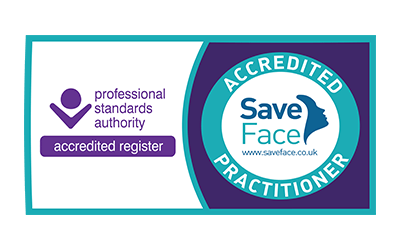What is blepharoplasty?
Blepharoplasty – or cosmetic eye surgery – is a procedure which reduces excess fat, skin and muscle from the upper and/or lower eyelids to reverse drooping, restoring a more alert and youthful appearance.
View our patient Debbie’s experience of blepharoplasty to discover what the procedure involves.
What to expect after blepharoplasty
Following the blepharoplasty procedure you will be monitored carefully to ensure that no excess bleeding occurs. You will be propped up on pillows in order to reduce swelling and cold compresses will be applied to the eye region to minimise post-operative bruising and swelling.
Antiseptic eye ointment will be applied postoperatively, along with antibiotic eye drops in the days to follow. If sutures were used in your procedure, these will be removed within 3-4 days. A large pair of sunglasses will help conceal the immediate aftereffects of the procedure whilst you recover.
Read more about the blepharoplasty recovery timeline.
Side effects after blepharoplasty
Common side effects of blepharoplasty surgery include:
- Swelling and tightness around the eyes – this usually resolves within ten days of the operation
- Minor leakage of blood from the incisions
- ‘Gummy’ eyes
- Asymmetry of the eyelids – this is only temporary and will resolve itself within a fortnight of the procedure
- Bruising – this is often the most long-lasting side effect of the surgery and can take up to a month to heal
There are also actions that you can take in your day to day life in order to minimise side effects and speed up recovery following the operation, including:
- Elevating your head with extra pillows while you’re sleeping
- Avoiding bending over as this can cause fluid to build up around the eye area
- The use of cold compresses to reduce bruising and swelling
Is blepharoplasty painful?
Blepharoplasty is not a particularly invasive procedure and it is common for patients to experience a little discomfort following the operation, rather than substantial pain.
You may experience sensations such as:
- Skin tightness
- Stinging
- Numbness
- Tingling
Any discomfort experienced as a result of the blepharoplasty procedure is easily controlled with regular painkillers such as paracetamol. Symptoms such as tightness and stinging tend to wear off within a matter of weeks, but occasionally symptoms persist for months.
Does blepharoplasty leave scars?
All surgical procedures leave scars – they are a normal part of cosmetic surgery and should be expected. Blepharoplasty scars, however, are small and usually heal very well.
Upper eyelid scars are tucked into the natural crease of the eye socket and lower eyelid scars are placed just below the eyelashes. In both cases, fully healed scars are very difficult to spot.
You should expect post-operative scars to be slightly red for the first couple of months after the procedure and it can take between 6-9 months for any redness to fade. The healing process tends to take a little longer if the incision extends into the crow’s feet area.
Gently massaging your scars may help to speed up the healing process.
If you have any questions about the blepharoplasty procedure or you’d like further information, please get in touch with us at the clinic where we will be able to advise you further. Here at Karidis Clinic, we also offer revision blepharoplasty, focused on correcting unsatisfactory results from a previous blepharoplasty.















